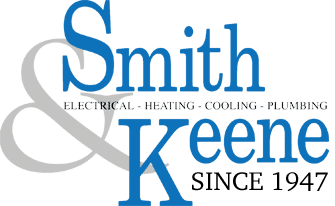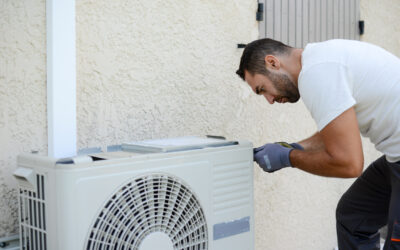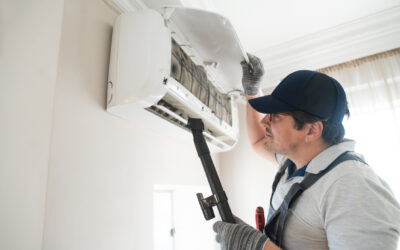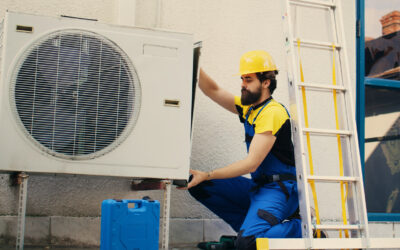From Virginia Beach to Williamsburg and all neighborhoods in between, fall is on the horizon. While you may be ready to say goodbye to the sweltering temperatures of summer and welcome the cool crisp air of fall, your home may not be. There are several steps you should take to ensure your home is ready for fall. We have developed a list of 16 fall home maintenance tips to help you prepare for the season ahead.
Fall HVAC Maintenance
The fall season in Hampton Roads marks a time when we transition from needing cooling solutions in our home to needing heat as we leave the heat of summer and prepare for the icy winter. Fall is the ideal time to give your HVAC a once-over. Performing fall HVAC maintenance to your home’s heating and cooling system can help your HVAC run more smoothly year-round. Fall HVAC maintenance can also prevent costly repair bills when your system runs hard in the winter.
Home Maintenance Tip #1: Clean Your Outdoor Condenser Unit
Your outdoor HVAC unit, the condenser, needs attention in the fall season as well. Indeed, with each change of the season, you should monitor your exterior HVAC unit to ensure it is clear of leaves, sticks, twigs, and pinecones. This natural debris could cause a fire hazard for your outdoor unit. Debris in your condenser is also an inviting wintering spot for squirrels and other critters.
If plants have grown in the vicinity of your exterior HVAC unit, make sure to trim back limbs or bushes that are in direct contact with your unit. Maintenance of your outside HVAC unit will improve the efficiency of your system as well as the lifetime of your unit – saving you money on utility bills and potential repair costs.
Home Maintenance Tip #2: Clean The Condensation Drain Line
Your air conditioner’s condensation line drains the moisture and condensation away from your indoor air handler outside through PVC piping. This piping should always remain clear of clogs as it prevents water overflow inside of your home. A cleared condensation line prevents drip pan overflow which could lead to major water damage. Additionally, a cleared condensation drain keeps your system running smoothly and efficiently.
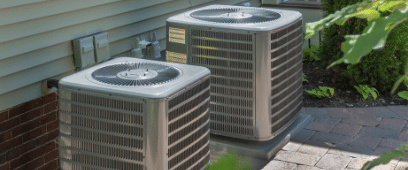
The humidity of the summer can be a breeding ground for mold and mildew in your condensation drain line. To clean your condensation drain line, start by using a wet-dry vacuum to clear any clogs or blockages. Next, pour a cleaning solution (distilled vinegar and hot water, hot water, and a drop of dish liquid, peroxide, or a cup of bleach) into the line from the top of your drain line. Removing blockages from your condensation drain line will prevent the need for more costly repairs if not addressed. Cleaning the drain line will reduce mildew smells that could impact your home’s air quality.
Home Maintenance Tip #3: Clean Vents & Replace Air Filters
Depending on the type of HVAC air filter that your home’s cooling system uses, it should be replaced as frequently as two times a year up to every 30 days. The proper replacement of the furnace or air-handler filter helps to keep your system running efficiently. If the filter is loaded with dust and dirt, it will restrict the flow of air and cause your home’s cooling system to work harder to cool to your liking.
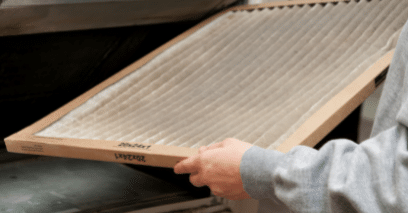
Home Maintenance Tip #4: Check and Reprogram Your HVAC Thermostat
Especially essential if you have a programmable or smart thermostat, be sure to re-calibrate your home’s thermostat settings for the fall. Decreasing your home’s thermostat setting by 7-10 degrees when the home is unoccupied and during sleeping hours of the night can add up to savings on your monthly utility bill.
Energy.gov claims that you can save as much as 10% a year on heating costs by lowering your thermostat settings between 7-10 degrees for at least eight hours a day from your normal setting in cooler months. The fall months are a great time to upgrade your thermostat as well. Whether you are considering upgrading your thermostat from a manual to a programmable or smart thermostat, make sure you manage the settings for optimum energy efficiency as the temperatures outside change.
Home Maintenance Tip #5: Schedule HVAC Maintenance with a Professional
The fall is a great time to have your home’s HVAC system undergo routine maintenance by an HVAC professional. Conducting regular professional maintenance of your HVAC system can catch minor problems before they turn into major problems, if not addressed.
Smith & Keene offers a plan where members receive regular maintenance and inspection of their home’s system for a low monthly fee. Having your system inspected by a professional can keep your HVAC system running smoothly and efficiently, saving you money on your monthly utility bills as well. Not a Signature Service member yet? Learn about Smith & Keene’s Signature Service program offerings and other benefits.
Home Maintenance Tip #6: Consider a New HVAC System
If you follow these maintenance steps and find that your system is not up to par, it may be time for a new cooling system for your home. If your home’s heating and cooling system is ten years or older, you may be surprised at the increased cost of repair, in part due to the short supply of a necessary coolant known as R-22.
Additionally, newer HVAC systems have improved their energy efficiency. While an older unit that is struggling to function properly may be driving your utility bills sky-high in the scorching summers and blistering-cold winters we have in Hampton Roads, a newer energy-efficient model can save 20 – 40% on energy costs versus a unit that is 10 years old, according to Energy.gov. Have an expert HVAC technician evaluate your failing system and determine if it’s time to invest in a new energy system rather than sink more money into repairing your existing system.
Monthly specials
To help Hampton Roads families afford the BEST in HVAC, Generators, and Plumbing equipment, we offer monthly specials. We help keep your home updated & your budget manageable.
Exterior Home Maintenance
Home Maintenance Tip #7: Clean Your Roof and Gutters
Here in Hampton Roads, hurricanes make their way into the area in the fall. With hurricanes, come fallen trees, branches, and damage to roofs due to high winds. Before winter, be sure to clear your roof of any debris. In preparation for the hurricane rains that will inevitably wash through Hampton Roads, you will want to ensure that there are no leaks or weak points in your roof and gutter system. A great time to inspect your roof is when you clear and clean your gutters.
Cleaning your gutters will ensure that any rainwater will be safely removed from your home’s roof. If rain runoff is trapped in your gutter system, then it could cause greater issues to your roof. Safely remove leaves, pine straw, and any other debris from your gutters. Once the debris is removed flush the gutters with the regular garden hose.
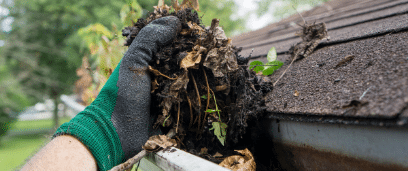
Home Maintenance Tip #8: Protect Outdoor Faucets from Freezing Temps
When the temperatures in Hampton Roads drop and winter freezing begins, it is important for you to monitor your water pipes to prevent frozen pipes. Your pipes are in danger of freezing or even bursting if the external temperature falls below 32 degrees Fahrenheit. To prevent frozen pipes, there are a few steps you can take in the fall.
First, you’ll want to remove any attached hoses from your outdoor faucets and drain them before putting them away for the winter.
Second, you’ll want to cover your outdoor faucets with an insulated cover. These outdoor faucet covers are fairly inexpensive and easy to install.
For more information on preventing frozen pipes, check out our blog.
Home Maintenance Tip #9: Aerate and Fertilize Lawn
When you think of your lawn and fall, more times than not you’ll think of raking leaves, but fall law maintenance includes much more than raking leaves.
Fall is a great time to aerate your lawn. Aeration prevents the soil from becoming compacted and being covered with thatch. It’s also the ideal time for Hampton Roads homeowners to seed and fertilize their lawns.
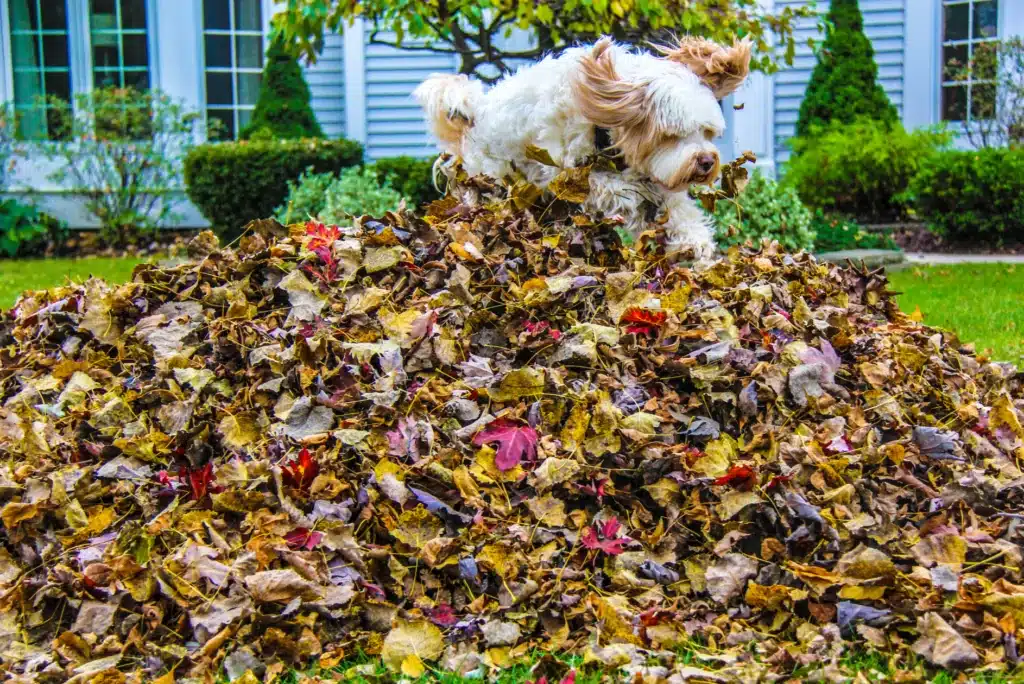
Interior Home Maintenance
Home Maintenance Tip #10: Inspect Your Home’s Water Heater
Check your hot water heater thoroughly. Check for leaks, cracks, or erosion as these may be signs that your hot water heater needs to be repaired or replaced. Read to learn more about the signs your water heater is nearing the end. Also, look over the pressure valve and ensure appropriate insulation is protecting necessary pipes.
Home Maintenance Tip #11: Adjust Water Heater Temperature
To prolong the life of your tank, turn down the temperature. Most tanks default to somewhere around 140 degrees, which is hot enough to scald skin and can be dangerous in households with children. Keep your family safe and decrease the demand on your water heater by limiting the temperature to no more than 120 degrees.
After adjusting your water heater temperature, it’s important to wait 3 hours before testing the temp.
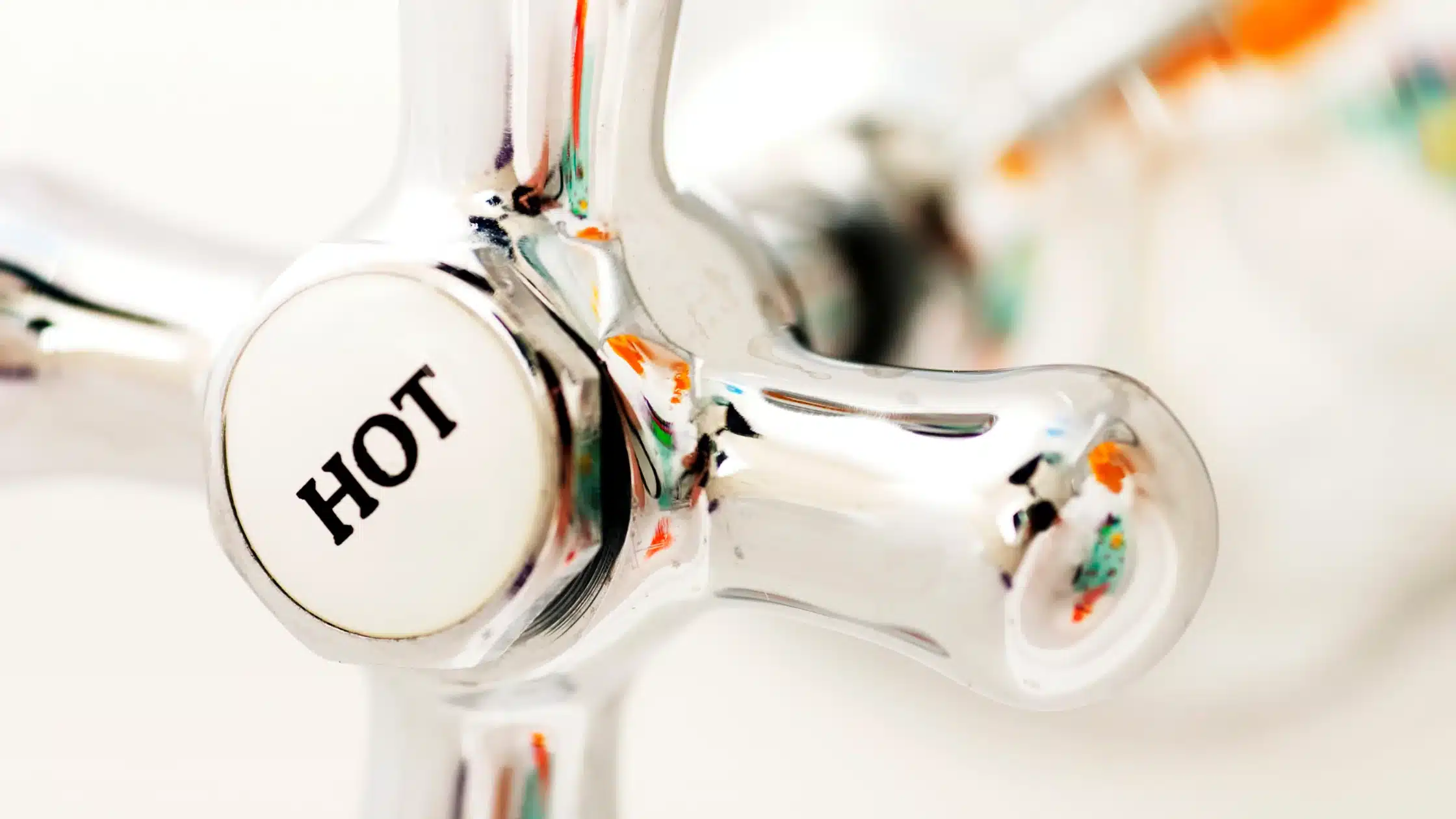
Home Maintenance Tip #12: Ready Your Fireplace & Chimney
One of the upcoming joys of fall is the pleasure of sitting by a roaring fire and warming your toes in its flickering glow. But before you light your first fire, you must make sure your chimney and fireplace are prepared for fall.
A dirty chimney could be a recipe for disaster. A thorough chimney sweeping includes the removal of creosote from your chimney and clearing any obstructions that might have made their way in (twigs, leaves, and even small animals).
It’s also a great time to inspect the cap and cage on your chimney to ensure they are working as they should and don’t need replacing. Be certain the flue is open and clear to allow smoke and gasses to exit the chimney.
Home Maintenance Tip #13: Utilize and Clean Humidifiers
A unique way to conserve heat in your home is to utilize humidifiers in the winter. Studies have shown that humidified air may actually feel warmer than dry air.
In addition to feeling warmer, a cool mist humidifier provides several benefits:
- Reduced allergy symptoms
- Less snoring
- Softer, less dry skin
- Reduced airborne diseases
- Improved sleep
Traditional humidifiers do need to be cleaned regularly as they are prone to moldy buildup.
Consider A Humidifier Add-On
These can be added onto most heating units.
Home Maintenance Tip #14: Keep Cold Air Outside and Warm Air Inside
Check for areas in your home where drafts are allowing cold air in and warm air to escape. Check windows and doorways for drafts. You may be able to add simple insulation in the form of weather stripping to reduce the loss of warm air and better insulate your home. If your home is an older home, a further investigation of your home’s insulation status may prompt you to consider better insulation in areas such as attics or ceilings.
Home Maintenance Tip #15: Change Your Ceiling Fan Direction For Winter
Air circulation is key to keeping your home cool in the summer and warm in the winter. Ceiling fans can help to circulate air in your home.
When ceiling fans are used in the summer months the blades rotate in a counterclockwise or forward direction. This rotation pushes warm air up and cool air down to provide a cooling effect in the summer. You can change the rotation of your ceiling fan by flipping the fan’s directional switch, typically located near the motor of the fan.
Ceiling fan blades should rotate in a clockwise direction (or reverse) for the winter. A clockwise blade direction draws the room air up towards the ceiling while forcing the warm air down and out – towards the walls. Keep ceiling fans on a low setting with blades rotating in a clockwise direction in occupied rooms during the winter to help circulate warm air.
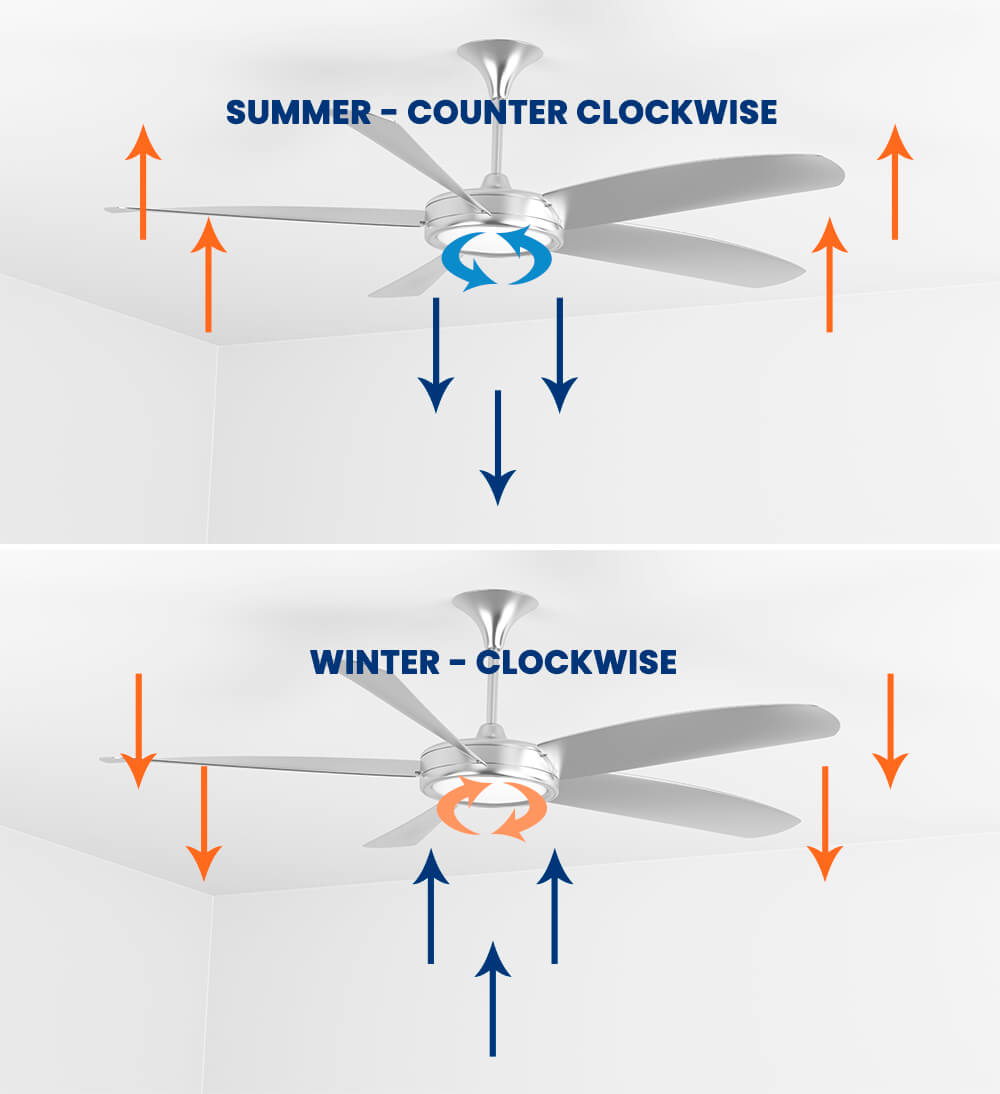
Home Maintenance Tip #16: Conduct A Home Safety Check
Check the batteries in smoke detectors and replace them if needed. Check the date on fire extinguishers. Ensure that carbon monoxide alarms are functioning. Fall is also a great time to make sure your family has a fire escape plan. Learn more about designing and practicing home fire escape plans.
In a home fire, you may only have two minutes to get out. Home fire plans give you a plan of action. Make and practice your plan with your family to help everyone stay safe.
Wrap-Up
As you prepare to enjoy the fall season, take time to prepare your home for the change in season and anticipation for cooler weather. A little maintenance effort for your home now will pay dividends four-fold as you lower utility bills, prevent major repair bills down the road, and allow you to better enjoy your home (inside and out) in the fall and winter months.
[Download] Fall Home Maintenance Checklist
Here’s a printable version of this fall home maintenance checklist. It has checkboxes, so you can check things off as you’ve completed them, and even has a spot to take notes. Add it to your household notebook, so it’ll be easy to reference.

